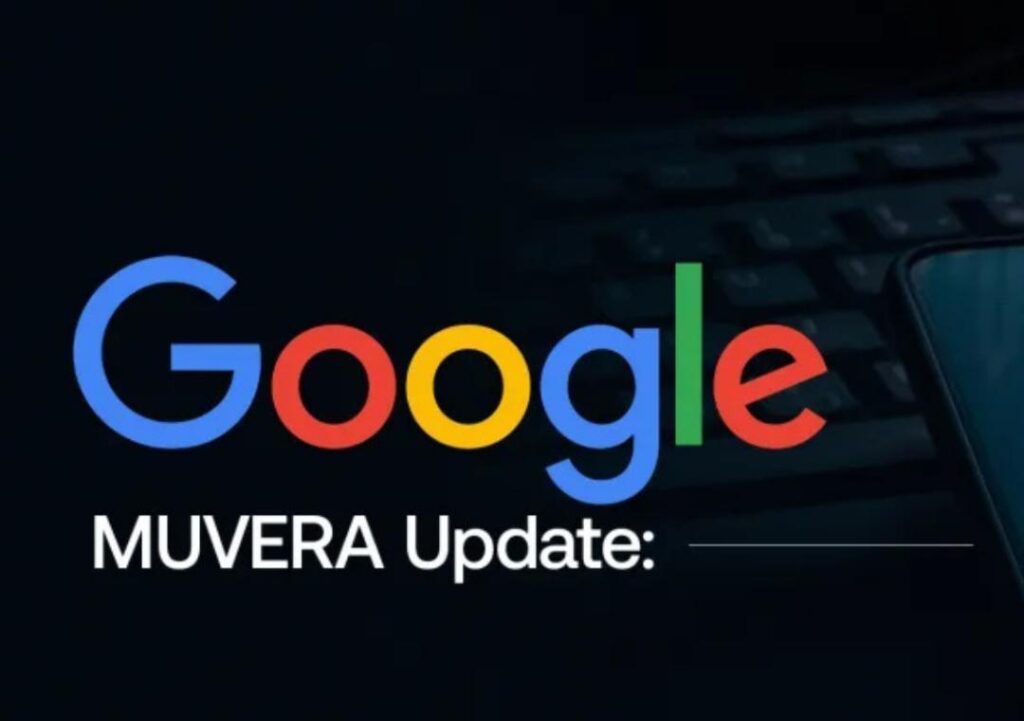The digital landscape is constantly evolving, and at its forefront is Google Search, undergoing a profound transformation with the rise of Artificial Intelligence. We’re moving beyond simple keyword matching to a more intuitive, conversational experience. This new era is defined by Google AI Mode, designed to offer a task-oriented assistant experience within search. At the very heart of this innovative approach lies a powerful and often misunderstood mechanism: the Query Fan-Out Technique. Understanding this core mechanism is paramount for anyone looking to maintain visibility and relevance in today’s search engine landscape.
What is the Query Fan-Out Technique?
At its simplest, the Query Fan-Out Technique is the powerful engine behind Google’s new AI-powered search experience. Instead of just matching keywords from a user’s search to a single web page, it’s a sophisticated method for dissecting and expanding a complex user need. Think of it as the AI’s internal brainstorming session. When you type in a complex, conversational question, the AI doesn’t just see one query—it “fans out” that single query into a multitude of related sub-queries. Here is how it works:
- Natural language processing and semantic understanding are employed to deconstruct complex, conversational questions. The AI doesn’t just look for exact keywords but grasps the underlying intent and nuances of the user query.
- Once understood, the AI issues a multitude of related searches concurrently across various subtopics and diverse data sources. This includes information from the web index, rich snippets from Knowledge Graphs, relevant data from Google shopping, and other proprietary sources.
- The vast amount of information collected from these simultaneous searches is then synthesized by a large language model, specifically powerful Gemini models like Google’s large language model Gemini. This synthesis is what allows Google AI Mode to provide a coherent, comprehensive answer.
- This process contrasts sharply with traditional search engine behavior, which typically focuses on matching a single keyword or phrase to individual pages. With fan-out queries, the AI tackles multiple intents simultaneously, leading to more complete and nuanced search results.
Query Fan-Out in Action
Consider a complex query like “What are the health benefits of a vegan diet and how do I start?” A traditional search might return separate links — one focused on health benefits, another on practical steps for beginners. With Query Fan-Out, however, Google AI Mode breaks the question into multiple layers of intent. It may generate sub-queries such as “nutritional advantages of plant-based eating,” “beginner vegan meal plans,” “common challenges of a vegan transition,” and “essential vegan supplements.” Instead of fragmented answers, the user receives a richer, more holistic response covering the entire journey from awareness to action.
The same applies to product research. A query like “best smartwatch for sleep tracking” might fan out into “smartwatch features for sleep analysis,” “accuracy of sleep trackers,” and “top-rated smartwatches for health.” Rather than offering a single product page, AI Mode synthesizes broader insights that help users evaluate, compare, and decide.
This illustrates the fundamental shift: content no longer wins by targeting isolated keywords, but by addressing the full spectrum of related questions. Brands that build comprehensive, authoritative resources will be favored as trusted answers in this AI-powered environment.
The Impact of Query Fan-Out on Search and SEO
he advent of the Query Fan-Out technique is fundamentally reshaping how content surfaces in search results, and with it, how SEO strategies must evolve. Unlike traditional search, where optimization was often about ranking high for a single keyword, AI-powered search engines are now branching out to understand intent in a much broader way. This creates both challenges and opportunities for brands aiming to remain visible.
Shift in Search Results and Ranking
In this new paradigm, ranking #1 for a single keyword is no longer the ultimate prize. What matters is how relevant your content is to the web of sub-queries generated by AI. Google AI Mode actively seeks the most comprehensive, trustworthy information, pulling from a wider set of sources regardless of their traditional ranking.
This represents a major shift from AI Overviews, which deliver short, concise answers. AI Mode aims to provide in-depth, conversational, and multi-layered responses. For marketers, the implication is clear: SEO is moving away from “beating the algorithm” to “fueling the algorithm with substance.”
The challenge is also analytical. Traditional SEO metrics such as impressions and clicks may paint only part of the picture. If users increasingly consume synthesized AI answers within the interface, direct traffic may decline. This forces SEO professionals to rethink KPIs, moving toward engagement, brand recall, and conversions as the true indicators of success.
Changes in Search Behavior and User Interaction
User expectations are evolving just as quickly as algorithms. People now feel comfortable asking long, complex, and conversational questions, and they expect answers that are holistic rather than piecemeal. Instead of searching five times to connect the dots, users want one comprehensive journey.
AI anticipates this by branching queries into follow-up questions and related concepts. For example, a user searching for “best supplements for energy” might trigger the AI to explore “vitamins that combat fatigue,” “natural remedies for low energy,” and “risks of over-supplementation.” Content that can answer across this spectrum, not just the first question, is far more likely to be surfaced.
For brands, this means creating content that feels natural, conversational, and anticipatory. Instead of writing for the algorithm, you’re writing for the full user journey — from discovery to evaluation to decision.
Emphasizing Topical Authority Over Singular Keyword Research
Perhaps the most transformative shift is the elevation of topical authority. Google’s AI no longer wants the page that happens to mention the keyword most often; it wants the source that demonstrates comprehensive expertise across the entire subject area.
This means SEO is moving beyond keyword-level optimization. The new goal is to make your site the definitive resource on your chosen domains. That involves covering a topic’s definitions, use cases, FAQs, comparisons, challenges, and future trends. The more interconnected and complete your topical coverage, the more likely AI is to identify you as the “go-to” authority.
Content Depth and Structure
AI thrives on clarity. Well-structured content with headings, schema markup, FAQs, and tables makes it easier for search engines to parse and repurpose your insights. Think of your content as a knowledge base: each piece should not only answer but also guide, categorize, and connect.
A practical tip: include FAQ sections, how-to guides, and comparison tables within your articles. These make your content highly adaptable to AI’s fan-out process.
Entity Optimization and Semantic SEO
The Query Fan-Out technique relies heavily on entities and their relationships. By clearly defining your entities (products, industries, locations, key people) and connecting them semantically, you create a web of meaning that mirrors how AI organizes knowledge.
Using schema markup, internal linking, and consistent terminology strengthens these entity signals. Over time, your site becomes recognized as an authority not just on keywords, but on concepts and relationships within your field.
Content Formats and Media Diversity
AI responses are not limited to text. They increasingly incorporate images, videos, charts, and snippets to provide a richer user experience. Brands that diversify their content formats increase their chances of being cited in AI-generated responses.
For instance, a step-by-step video, infographic, or chart may be more likely to be surfaced than a plain block of text. Multi-format content is the new competitive edge.
Internal Linking and Site Architecture
AI doesn’t just look at one page in isolation — it maps how your entire site fits together. Strong internal linking helps clarify your topical clusters and signals depth of expertise.
Think of your site as a knowledge graph: the clearer the connections between articles, the easier it is for AI to see you as an authority. A fragmented site with siloed content will struggle to compete in this new environment.
Brand and Trust Signals
In a world where AI chooses which sources to cite, trust becomes non-negotiable. Google’s E-E-A-T framework (Experience, Expertise, Authoritativeness, Trustworthiness) takes center stage. Demonstrating author credentials, citing reputable sources, and showcasing real-world expertise will all improve your chances of being included in AI answers.
More importantly, brand recognition itself becomes a ranking factor. If users trust and search for your brand by name, AI is more likely to surface your content in its responses.
Rethinking Analytics and KPIs
Finally, SEO professionals will need to redefine what success looks like. Traditional KPIs such as impressions, clicks, and CTR may decline as AI reduces the need to click through. Instead, attention should shift toward:
- Branded search volume (are more people seeking you directly?)
- Engagement metrics (time on page, shares, comments)
- Conversions and assisted conversions (is your content driving action?)
- Visibility in AI results (are your snippets appearing in answers?)
The brands that adapt their measurement models will gain a clearer view of their true digital presence in an AI-first world.
Optimizing Your Content for Google AI Mode’s Query Fan-Out
Adapting your content strategy to align with Google’s Query Fan-Out technique is crucial for future visibility. Below are the key areas to focus on when preparing your website for AI-powered search.
1. Building Comprehensive Topical Authority and Content Clusters
The era of chasing single keywords is fading. AI rewards depth and breadth across entire subjects.
Think like an AI: Brainstorm all related sub-questions a user might have about your topic.
Use pillar pages: Cover a broad theme (e.g., Bluetooth Headphones) in one main page.
Support with cluster content: Create in-depth articles for specific subtopics like noise cancellation, battery life, budget options, or best for workouts.
Run topic gap analysis: Identify missing angles to ensure your coverage is exhaustive.
This cluster model creates a strong network of interlinked content that signals topical authority.
2. Structuring Content for AI Comprehension (“Semantic Chunks”)
Google AI Mode processes information in chunks or passages. Your job is to make each chunk easy to understand and extract.
Use clear, descriptive H2/H3 headings.
Write concise, self-contained sections that answer specific sub-queries.
Add FAQ blocks, lists, and comparison tables for scannability.
Implement schema markup to define entities and relationships explicitly.
Clarity and structure make your content more accessible to AI’s internal models (vector space, latent space).
3. Enhancing Trust and Credibility (E-E-A-T)
AI systems must decide which sources to trust. To stand out:
Provide factual, verifiable information backed with citations.
Showcase author expertise with bios and credentials.
Ensure transparency: secure site, clear contact details, privacy policy.
Encourage positive brand mentions across the web — even unlinked references contribute to authority.
The stronger your E-E-A-T, the more likely your content will be surfaced by AI.
4. Leveraging AI Tools and Principles for Optimization
AI tools can help simulate how Google might expand queries and connect concepts.
Use tools like Gemini or similar LLMs to generate subtopics and content ideas.
Experiment with “show reasoning” features (when available) to see how AI links ideas.
Study semantic similarity and cosine similarity to understand how AI compares content chunks to queries.
Stay informed on Google’s move from simple query decoders to more advanced encoders (e.g., GTR models) powering thematic search.
These insights let you align content with how AI interprets and retrieves information.
5. Anticipating User Intent and Follow-Up Questions
AI doesn’t just answer the first query — it expands into what comes next. Prepare your content for this journey:
Brainstorm explicit and implicit sub-intents behind queries.
Cover practical needs (e.g., how to start), challenges (e.g., common mistakes), and comparisons (e.g., X vs. Y).
Align with Deep Search in Google AI Mode, which digs into niche aspects of a topic.
Anticipating intent keeps your content relevant throughout the user’s journey.
6. The Future of Search: Continuous Adaptation
Google AI Search represents a paradigm shift from query-focused to context-driven search. Query Fan-Out is at the heart of this evolution, demanding ongoing refinement of SEO strategies.
Provide high-quality, user-centric, and comprehensive content.
Establish genuine topical authority with clear, structured clusters.
Monitor updates via the Google Blog, Google I/O, and industry resources like Search Engine Journal.
The brands that adapt continuously will be best positioned to thrive.
Transform Your SEO for the AI Era
Is your SEO strategy ready for Google’s AI Mode and Query Fan-Out? Don’t get left behind.
At SEO Transformer, we specialize in advanced strategies for the AI age, from building topical authority and structuring content for AI comprehension to leveraging the latest tools for optimization.
Ready to future-proof your SEO? Contact us to learn more about our services.









